The impact of disability discrimination
Ouch! Being treated differently because of disability can hurt the person with disability and their family members, friends and others who love them.
The purpose of this article is to give an overview of the Commonwealth’s Disability Discrimination Act 1992, and provide some practical examples of how this key Act works to safeguard the rights of people with intellectual disability [1].
Application and objectives
The Disability Discrimination Act 1992 (Cth) applies throughout Australia.
The objectives of the Act ,as stated in section 3, are to:
- eliminate discrimination on the basis of disability;
- ensure that persons with disabilities have the same rights to equality before the law as the rest of the community; and
- promote recognition and acceptance within community of the principle that persons with disabilities have the same fundamental rights as the rest of the community.
What does the Disability Discrimination Act do?
Part 2 of the Act prohibits discrimination on the basis of disability in the following areas of public life:
- employment;
- accommodation;
- education;
- access to public premises;
- access to clubs and sport;
- the provision of goods, facilities, services and land;
- the application of existing laws; and
- the administration of Commonwealth laws and programs.
Sections 7 and 8 of the Act also protect people with disability from discrimination because they:
- are accompanied by an assistant, interpreter or reader;
- are accompanied by a trained animal, such as a guide, hearing or assistance dog; or
- use equipment or an aid, such as a wheelchair or a hearing aid.
What is ‘disability’ under the Act?
Section 4 of the Act defines ‘disability’ so widely as to include:
- partial, as well as full, loss of bodily or mental functions;
- bodily disfigurement;
- actual or potential disease and illness;
- past and future, as well as current, disability;
- imputed or assumed disability; and
- behaviour that is a manifestation of a disability.
This very wide definition of the ‘disability’ in the Act reflects two things. First, that disability takes many forms, can vary over time, and affect individuals in very unique ways. Second, the intention of the Commonwealth Parliament in making the Act, that it should cast the widest possible protective net over those affected by disability.
What is disability ‘discrimination’ under the Act?
Sections 4, 5 and 6 of the Act outline a definition of ‘discrimination’ that distinguishes between ‘direct’ and ‘indirect’ discrimination, and outlines when a person or entity is, and is not, acting in a discriminatory way for the purposes of the Act.
A person or entity commits ‘direct disability discrimination’ when:
- they treat, or propose to treat, the person with disability less favourably than a person without that disability in the same circumstances; or
- they do not make ‘reasonable adjustments’ for the person with disability, with the effect that the latter is treated less favourably than a person without the disability would be treated in the same circumstances (section 5).
What is a ‘reasonable adjustment’ and ‘unjustifiable hardship’
An adjustment is reasonable unless making it would imposes an ‘unjustifiable hardship’ on the person or entity (section 4).
Section 11 of the Act states that in determining what is, or what is not, unjustifiable hardship to a person or entity, all relevant circumstances of the particular case must be taken into account, including:
- the nature of the benefit or detriment likely to be suffered by any person concerned, including by the community as a whole;
- the effect of the disability of any person concerned;
- the financial circumstances of, and the estimated cost to, the person or entity, of making the proposed adjustment;
- the availability of financial and other assistance to the person or entity; and
- any relevant disability discrimination action plan prepared under Part 3 of the Act.
Examples of direct discrimination
It is no doubt evident to you, just from the wording of these key definitions, that what is, and what is not, a ‘reasonable adjustment’, and what constitutes ‘unjustifiable hardship’, depends on the unique circumstances of the individual’s case. Here are some examples to better illustrate what direct discrimination is.
Example 1
A large firm refusing to employ a person with a learning disability in a receptionist for an administrative job, because of the person’s disability, when the employer could make reasonable adjustments, such as allocating more time to complete their duties, or providing extra training and support, to enable the person to do the job. Such adjustments are relatively low cost easy to implement and would not cause ‘unjustifiable hardship’ to the employer.
Example 2
A primary school refusing to allow a student with Down syndrome to attend an excursion because they would require extra teacher supervision, in circumstances where the school could reasonably arrange for a parent volunteer, a teacher’s aide or support worker to supervise the student.
Indirect disability discrimination
A person or entity commits ‘indirect disability discrimination’ against a person with disability if:
- they make a requirement or condition that the person with disability cannot comply with, because of their disability;
- the person or entity does not make reasonable adjustments to help the person comply; and
- as a result, the person with the disability is disadvantaged.
For example, a football club imposing a requirement that prospective members with dyslexia or illiteracy must read and write to complete its membership application form, where it would be reasonable for the club to offer an alternative, such as allowing a prospective member to apply orally, or provide them with assistance to complete the form.
However, if it is not discrimination if the person or entity can show the imposition of the requirement or condition was reasonable in all the circumstances.
Conclusion
Disability discrimination, or being treated in a negative way because you or a family member has a disability, can cause a lot of emotional pain, and affect your opportunities and access to a normal life in the community. While social attitudes to disability have significantly changed over the past 40 to 50 years to promote a more inclusive and accessible community, the law is on your side if you or a family member feel the ‘ouch’ of discrimination in a particular situation.
Special Voices can assist people who have faced discrimination on the basis of disability. Contact today for a free initial consultation.
References
Australia’s anti-discrimination law, Attorney-General’s Department (Australian Government)
Australian Human Rights Commission website
Discrimination and Human Rights Legislation, The Law Handbook, Fitzroy Legal Centre, page as published on 1 July 2020
Australian Disability Clearinghouse on Education and Training website
Submission to 2020 Review – Disability Standards for Education, Down Syndrome Australia, September 2020





